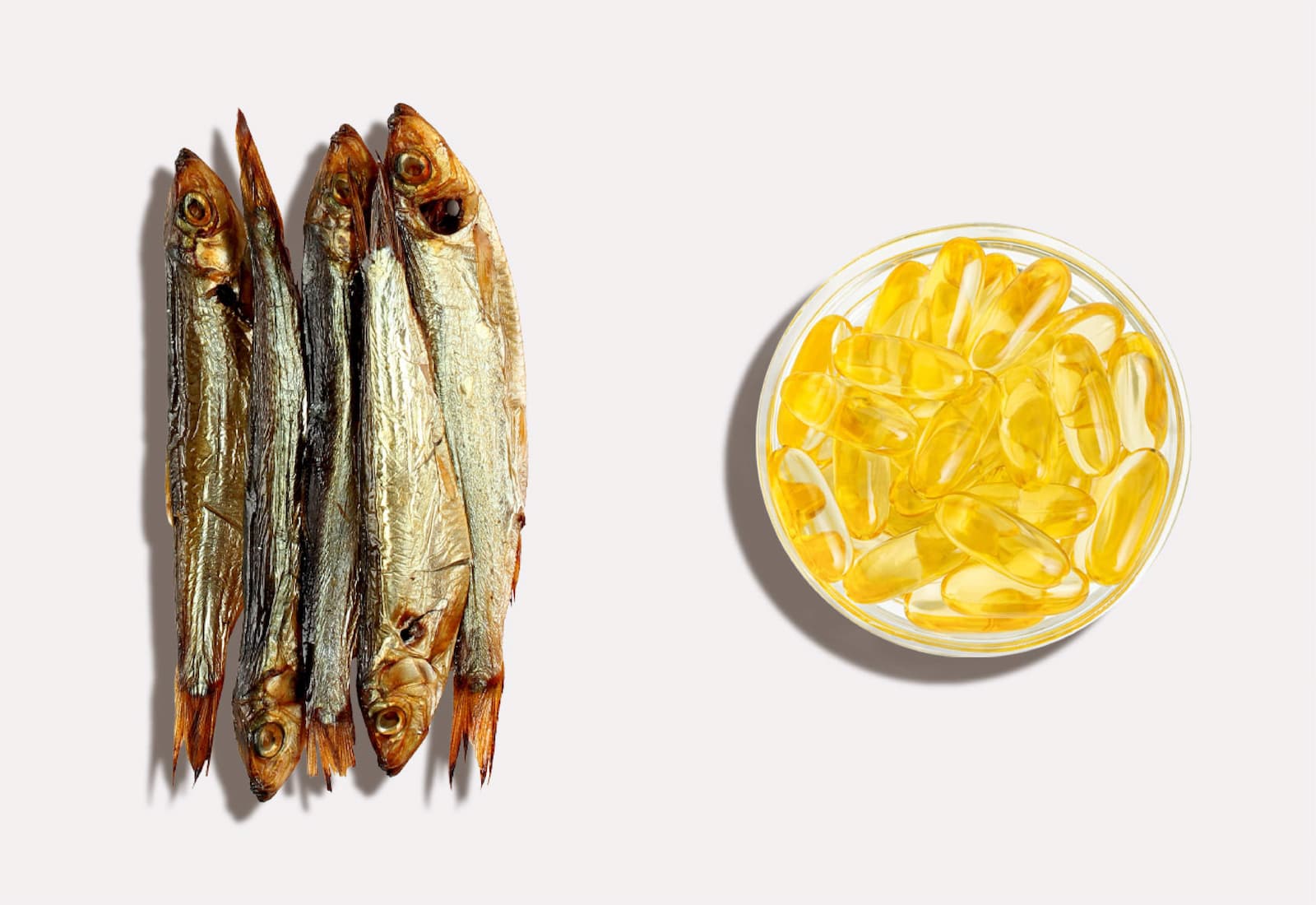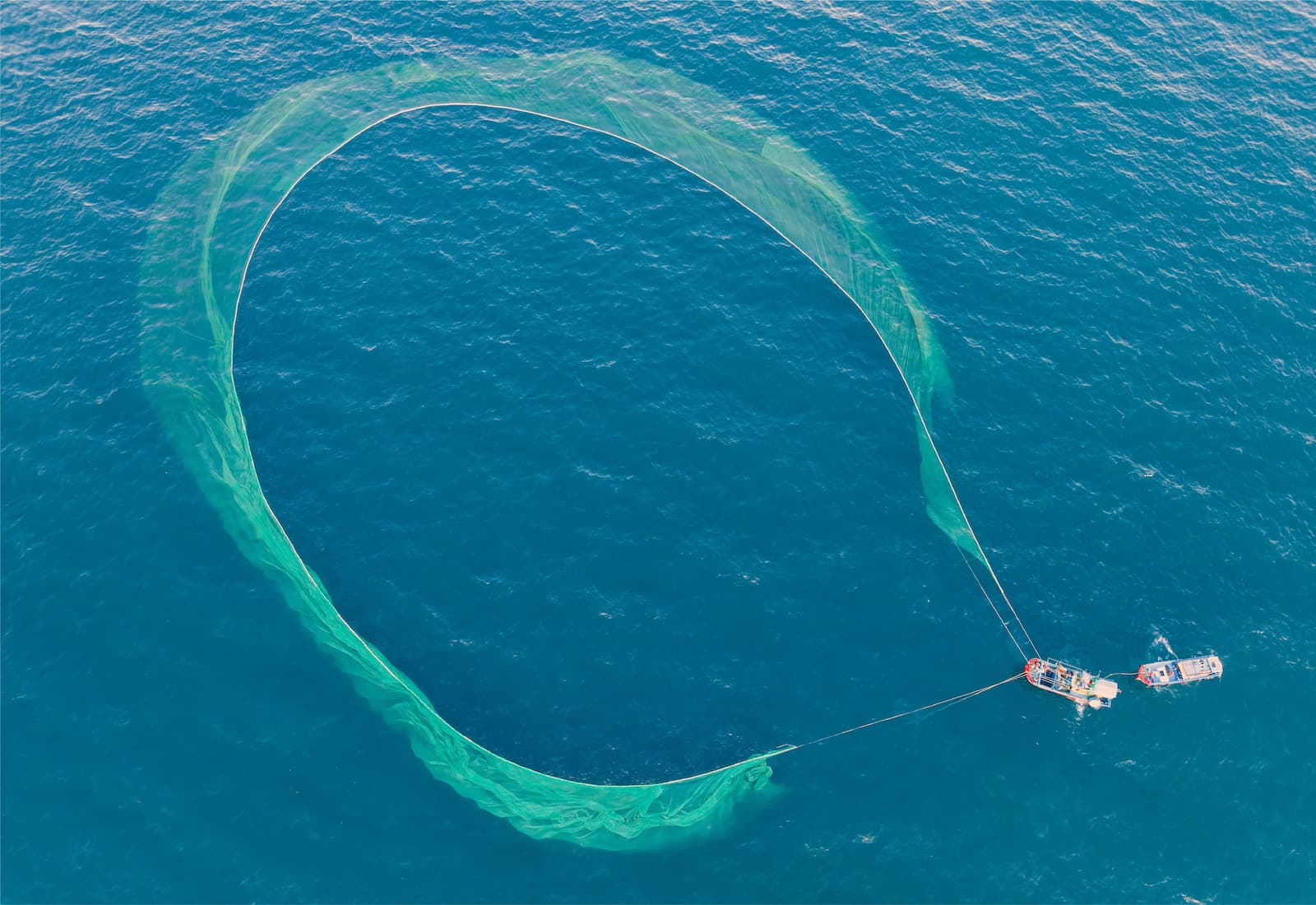Omega-3s are one of the most widely recognized ingredients on the dietary supplements shelf. By 2030, the global market for fish oil is expected to be worth 3.6 billion.
And it's not surprising. Recommended for every age group, aside from the well documented benefits for cardiovascular, brain and visual health, more studies are emerging to show how omega-3s offer immune support whilst also aiding mood, sleep, and sports performance.
Fish oil business is booming.
The Peruvian anchovy fishery is the world's largest single-stock fishery. It yields around 7 million metric tons of fish annually. Their use: fishmeal and fish oil.
Almost a third of all commercial fishing is to obtain fish oil for omega-3s. 38,000 tonnes of anchovy oil is extracted for dietary supplements each year and roughly 50 fish are killed for each bottle of fish oil omega-3 supplement. The consequences of these figures are overfished stocks and bycatch.
There's a murky undercurrent to the fish oil story.
Let's start at the very beginning...
The DHAs and the EPAs - that's where the gold is. These varieties of omega-3s are the most bioavailable to us and we get those from fish. Right?

Wrong.
Omega-3 fatty acids are actually formed in the chloroplasts of green leaves and algae...

Green leaves and algae.
Notice there's no fish here. None. Just green leaves and algae.
The story really starts with algae. Then krill, the small crustaceans of the oceans, eat the algae. And the small fish eat the krill. And the big fish eat the small fish. And we eat the big fish. And being top of the food chain, we benefit from the DHA and EPA omega-3 found in those fish.
Which leaves us all thinking that we need to eat fish to get our omega-3. Whenever we read health advice that's promoting a diet that includes oily fish - omega-3 is always mentioned in the same sentence. It's not surprising we all think the way to a healthy heart is through eating fish. It's a widespread misconception that fish are the producers and sole source of omega-3.
But they're not.
The fish just got caught up in the food chain. Fish are the fall guys in this story. They're not the guys responsible for omega-3, algae are the guys.
It's a colossal case of mistaken identity.
And a case that's led to over-farming, depleted oceans, fishy burps, and rancid fish oil.
Which is better, fish or fish oil?

We're not saying avoid fish altogether. As long as it's sustainably sourced, getting your omega-3s from fatty fish is fine. After all, fish come with a healthy side order of protein, vitamin D and selenium. It's a good way to get protein and omega-3s. The problem is when we're overfishing and maxing out fisheries for a supplement. Especially when that omega-3 exists elsewhere with exactly the same benefits. It makes no sense.
We don't farm monkeys for potassium just because they eat bananas.
So why are we still farming fish for omega-3?
What's wrong with fish oil?
The enormous global demand for omega-3 is putting huge strain on fish stocks. The reality is, there simply isn't enough global fish supplies left to support demand. With entire ecosystems in decline there's a need to explore alternative sources.
Fish oil supplements are a product of the reduction industry. A reduction fishery is one that uses its catch to produce fishmeal or oil rather than fish for direct human consumption. The largest reduction operation came about off the coast of Peru in pursuit of Peruvian anchoveta. Over the years these anchoveta have been put to use as fertilizer, chicken feed, pet food and pig food. Anchovetas are rich in EPA and DHA. Making them a prime target for fish oil supplements.

Sustainability
According to Oceana, the international ocean conservation organization, due to their large natural numbers and speedy recovery time, even though Peruvian anchoveta are heavily exploited, they're not at risk of extinction.
But it's not all about one species.
Anchovies, sardines, and herring sit lower in the marine food chain and are known as 'low trophic level species.' As such, they play a crucial role in the food chain. Larger fish, sea birds and marine mammals feed on them. Overfishing these low trophic level species has significant impact higher up the food chain. So, it's important to harvest them responsibly.
A major concern is that fisheries are catching too many juvenile fish. If the fish are caught before they reproduce, then the population can't sustain itself. Despite regulations imposing temporary closures in areas where juvenile catches exceed 10%, seven large companies in the sector flouted this rule between 2016 and 2019 and continued operating in areas already identified as having excess juvenile fish.
Bycatch

Wherever there's fishing or trawling, there's bycatch. Other fish, dolphins, sea turtles, whales and seabirds get caught up in nets that weren't intended for them. Fishing industries often get rid of the catch they don't want, can't sell or aren't allowed to keep, which results in needless deaths and injuries to other marine species.
Over oxidized fish oil

In addition to the effect this over farming is having on our oceans and ecosystems. The supplements at the end of it can sometimes become over oxidized. Leaving them rancid.
Rancid fish oil. Nice.
A combination of global studies showed an average of 20% of fish oils are over oxidized. That's a possible 1 in 5 of the supplements on your supermarket shelves.
When a substance is exposed to light, heat or air, there's a risk of over oxidation. When something's highly oxidized, it becomes rancid. Which is more likely when there's a complex supply chain to contend with. With the Peruvian anchoveta, they get shipped to China for extraction and distillation, then to North America or Europe to be packaged - so it's difficult to protect the product as it moves through the different stages. Any time spent in the open air or in hot conditions increases the likelihood of oxidation.
One way to tell the purity and freshness of your fish oil is to check the TOTOX value (Total Oxidation Value). This value indicates the degree of oxidation and gives an insight into how fresh the fish oil is. The lower the number, the fresher it is. The value should never exceed 26.
What is the plant-based solution to fish oil?
"Omega-3 fatty acids are formed in the chloroplasts of green leaves and algae."
By getting our omega-3 fatty acids directly from algae we no longer need to deplete the oceans. Marine algae are nature's source of the key ingredients of fish oil: EPA and DHA. It's the more sustainable option with the lesser carbon footprint.
And no fishy aftertaste.
There's no reason we should still be getting our omega-3s from fish oil, but in case you're still wondering, let's recap and debunk some myths.

6 myths about algal omega-3s:
Myth 1: EPA and DHA are produced by fish.
Like us, fish are not able to produce EPA and DHA omega-3 themselves. They can only get their omega-3 by eating microalgae in the ocean.
Myth 2: Algal omega-3s are less bioavailable.
There's no difference. They work in exactly the same way that fish oil works in the body.
Myth 3: Algal sources of omega-3 are less potent than fish oil.
Scientists can select and grow algae that are higher in omega-3s or increase the amount of omega-3s produced by adjusting their exposure to UV light, oxygen, sodium, temperature and glucose. This means algae sources can be a more optimal source of EPA and DHA.
Myth 4: Omega-3 from fish oil offers greater health benefits.
Algal omega-3 has exactly the same benefits as fish oil. Meaning those that are vegetarian, or vegan can still get the same intake of essential fatty acids.
Myth 5: Algal sources carry the same risk of ocean pollutants as fish.
Because it's grown under controlled conditions and purified, algal oil is free from the pollutants that may be present in fish oil supplements. Extracted using water instead of solvents, there's no risk of exposure to environmental contaminants like polychlorinated biphenyls (PCBs). This process has a very small environmental footprint.
Myth 6: Algae will still taste fishy.
Algae has a more neutral taste making it more palatable for those that prefer their omegas without the fishy breath.
This is why Performance Lab® chose to produce an omega-3 that supplies safe, clean, vegan friendly and sustainable DHA+EPA Omega-3s directly from their original source.

Performance Lab® Omega-3 with life's™OMEGA algal oil supplies high-potency DHA+EPA benefits without fish oil drawbacks. Our algae are grown in the USA in state-of-the-art indoor facilities; traceable from start to finish.
Performance Lab® Omega-3

Ultraclean: No mercury, heavy metals, PCBs, or toxic contaminants associated with fish oil.
Eco-friendly: Algae is a large, highly sustainable biomass with a small carbon footprint.
Easy to take: Delivered in easy to swallow NutriGels®. The world's first vegan, carrageenan-free softgels. And with no fishy smell, fishy aftertaste or related gastric distress.
Third party tested and verified: Every batch of Performance Lab® Omega-3 is third party tested for freshness, purity, and oxidation. The TOTOX value (total oxidation value) should not exceed 26. The lower the number, the fresher it is. Generally, the average value is around 4-6. Performance Lab® Omega-3 has a value of 2.4.
If you want high-potency DHA+EPA benefits without the aftertaste, heavy metals or eco-destructive consequences. Performance Lab® Omega-3 supplies safe, clean and sustainable Omega-3s directly from their original source: Algae.















